Publications so far
0
| 1. | 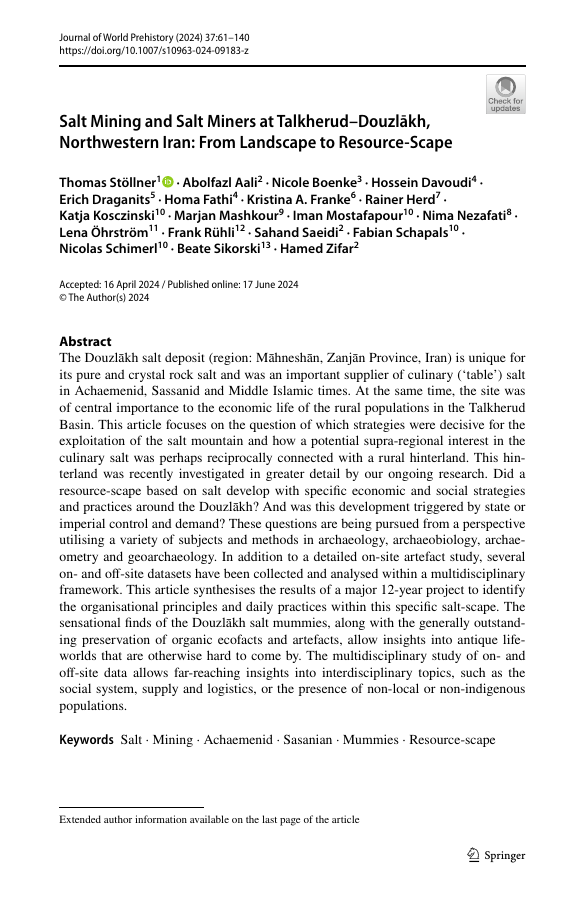 | Stöllner, Thomas; Aali, Abolfazl; Boenke, Nicole; Davoudi, Hossein; Draganits, Erich; Fathi, Homa; Franke, Kristina A.; Herd, Rainer; Kosczinski, Katja; Mashkour, Marjan; Mostafapour, Iman; Nezafati, Nima; Öhrström, Lena Maria; Rühli, Frank; Saeidi, Sahand; Schapals, Fabian; Schimerl, Nicolas; Sikorski, Beate; Zifar, Hamed: Salt Mining and Salt Miners at Talkherud–Douzlākh, Northwestern Iran: From Landscape to Resource‑Scape. In: Journal of World Prehistory, vol. 37, pp. 61-140, 2024. (Type: Journal Article | Abstract | Links | BibTeX)@article{nokey,The Douzlākh salt deposit (region: Māhneshān, Zanjān Province, Iran) is unique for its pure and crystal rock salt and was an important supplier of culinary (‘table’) salt in Achaemenid, Sassanid and Middle Islamic times. At the same time, the site was of central importance to the economic life of the rural populations in the Talkherud Basin. This article focuses on the question of which strategies were decisive for the exploitation of the salt mountain and how a potential supra-regional interest in the culinary salt was perhaps reciprocally connected with a rural hinterland. This hinterland was recently investigated in greater detail by our ongoing research. Did aresource-scape based on salt develop with specific economic and social strategies and practices around the Douzlākh? And was this development triggered by state or imperial control and demand? These questions are being pursued from a perspective utilising a variety of subjects and methods in archaeology, archaeobiology, archaeometry and geoarchaeology. In addition to a detailed on-site artefact study, several on- and off-site datasets have been collected and analysed within a multidisciplinary framework. This article synthesises the results of a major 12-year project to identify the organisational principles and daily practices within this specific salt-scape. The sensational finds of the Douzlākh salt mummies, along with the generally outstanding preservation of organic ecofacts and artefacts, allow insights into antique life-worlds that are otherwise hard to come by. The multidisciplinary study of on- and off-site data allows far-reaching insights into interdisciplinary topics, such as the social system, supply and logistics, or the presence of non-local or non-indigenous populations. |
| 2. | 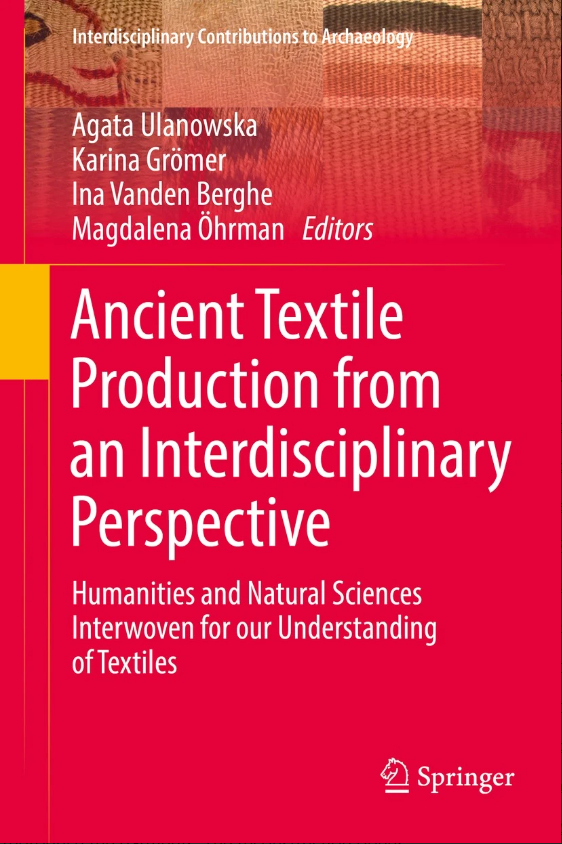 | Moskvin, Aleksei; Grömer, Karina; Moskvina, Mariia; Kuzmichev, Victor; Stöllner, Thomas; Aali, Abolfazl: 3D Visualization of the 2400-Year-Old Garments of Salt Man 4 from Chehrābād, Iran.. In: Ulanowska, Agata; Grömer, Karina; Berghe, Ina Vanden; Öhrman, Magdalena (Ed.): Ancient Textile Production from an Interdisciplinary Perspective, Springer, Cham, 2022, ISBN: 978-3-030-92170-5. (Type: Book Chapter | Links | BibTeX)@inbook{nokey, |
| 3. |  | Henkelman, Wouter F. M.; Stolper, Matthew W.: Counting Trees around Persepolis. In: Agut-Labordère, Damien; Boucharlat, Rémy; Joannès, Francis; Kuhrt, Amélie; Stolper, Matthew W. (Ed.): Achemenet, vingt ans après: Études offertes à Pierre Briant à l’occasion des vingt ans du Programme Achemenet , pp. 169-199, Peeters, Leuven, 2021. (Type: Book Chapter | Links | BibTeX)@inbook{nokey, |
| 4. |  | Stöllner, Thomas; Aali, Abolfazl: Einblicke in eine Katastrophe. Das Salzbergwerk von Douzlākh bei Chehrābād. In: Karlsruhe, Badisches Landesmuseum (Ed.): vol. Die Perser. Am Hof der Großkönige, pp. 116-20, WBG/Philipp von Zabern, Darmstadt, 2021, ISBN: ISBN 978-3-8053-5276-5. (Type: Book Chapter | Links | BibTeX)@inbook{nokey, |
| 5. | 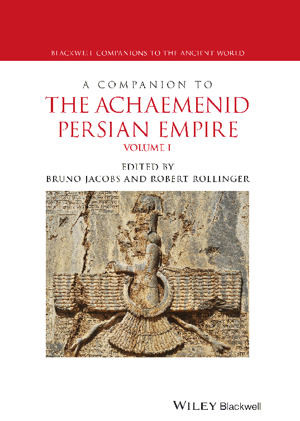 | Henkelman, Wouter F. M.: Local Administration: Persia. In: A companion to the Achaemenid Persian Empire, vol. 2, pp. 881—904, John Wiley & Sons, 2021. (Type: Book Chapter | Abstract | Links | BibTeX)@inbook{nokey,Two predominantly Elamite archives found at Persepolis are the prime source for the local administration of the Achaemenid heartland per se as well as for the backbone for any socioeconomic history of the empire at large. The sur- vey offered here centers on administrative structures, hierarchies, and proto-cols in relation with other textual sources; it is supplemented by another survey (Henkelman 2013b), focusing on find circumstances, formal charac-teristics, and connections with archeological discoveries (other surveys: Cahill 1985; Briant 2002: pp. 422–471; Henkelman 2008b: pp. 65–179, 2013a; Azzoni et al. 2017; Garrison 2017: pp. 15–116; cf. Kuhrt 2007: pp. 763–825). |
| 6. |  | Stöllner, Thomas; Aali, Abolfazl: Long-Term Salt Mining in Chehrābād: Resilient Strategies in Accessing Mineral Resources at the Iranian Highlands. In: Pearls, Politics and Pistachios: Essays in Anthropology and Memories on the Occasion of Susan Pollock’s 65th Birthday, pp. 352-369, Ex Oriente/Propylaeum, Berlin/Heidelberg, 2021. (Type: Book Chapter | Links | BibTeX)@inbook{nokey, |
| 7. |  | Henkelman, Wouter F. M.; Jacobs, Bruno: Roads and Communication. In: A companion to the Achaemenid Persian Empire 1, vol. 1, pp. 219-735, John Wiley & Sons, Hoboken, 2021. (Type: Book Chapter | Abstract | Links | BibTeX)@inbook{nokey,A refined and extensive net of roads ran through the Achaemenid Empire, known as “royal roads” in the classical sources. They served messengers and embassies as well as being used for the transport of taxes and tributes. Because of their considerable width, they were suited for the movement of troops and transport by larger vehicles. Roads such as the well-documented connections between Sardis and Susa or between Persepolis and Susa crossed and opened up the entire empire. There were also countless auxiliary roads. Furthermore, travel and transport by water played an important role. The transport network guaranteed a speedy flow of information and empire-wide communication, and thus provisioning for travelers was secured, way stations were maintained, and a high standard of safety was guaranteed. |
| 8. | 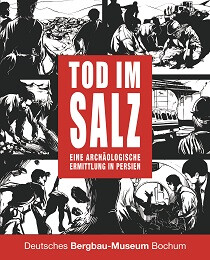 | Stöllner, Thomas; Aali, Abolfazl; Kashani, Natascha Bagherpour (Ed.): Tod im Salz. Eine archäologische Ermittlung in Persien. Nünnerich-Asmus Verlag & Media GmbH, 2020, ISBN: 978-3-96176-141-8. (Type: Book | Abstract | Links | BibTeX)@book{nokey,Since the first discoveries in 1993 bodies or body-parts of eight humans have been discovered at the salt-mine of Douzlākh at Chehrābād. These bodies allow a reconstruction of their lives as workers during the different operation periods. By involving many different scientific fields, it became possible to investigate their palaeo-medical aspects, their diet and their health status as well the causes of their death and their involvement into different aspects of the mining operation and logistics of the mine. It is possible not only to reconstruct three different catastrophes during the Achaemenid, the early and the late Sasanian times but also to understand the social aspects of the working people. The Achaemenid miners certainly came from abroad but already stayed a while in the region, apart from the young miner no. 4 who seems to have arrived shortly before the catastrophe. This group of migrants possibly were sent within a “bandaka”, an Achaemenid labour duty. The Sassanian miners partly came from a “regional” background but also came shortly before their deaths. Saltman 1 is interesting as he is an older individual who possibly had a special role within the miners. Mining at Douzlakh was predominantly operated in periods of strong centralized political systems when governmental activities could be organized over longer distances. |
| 9. | 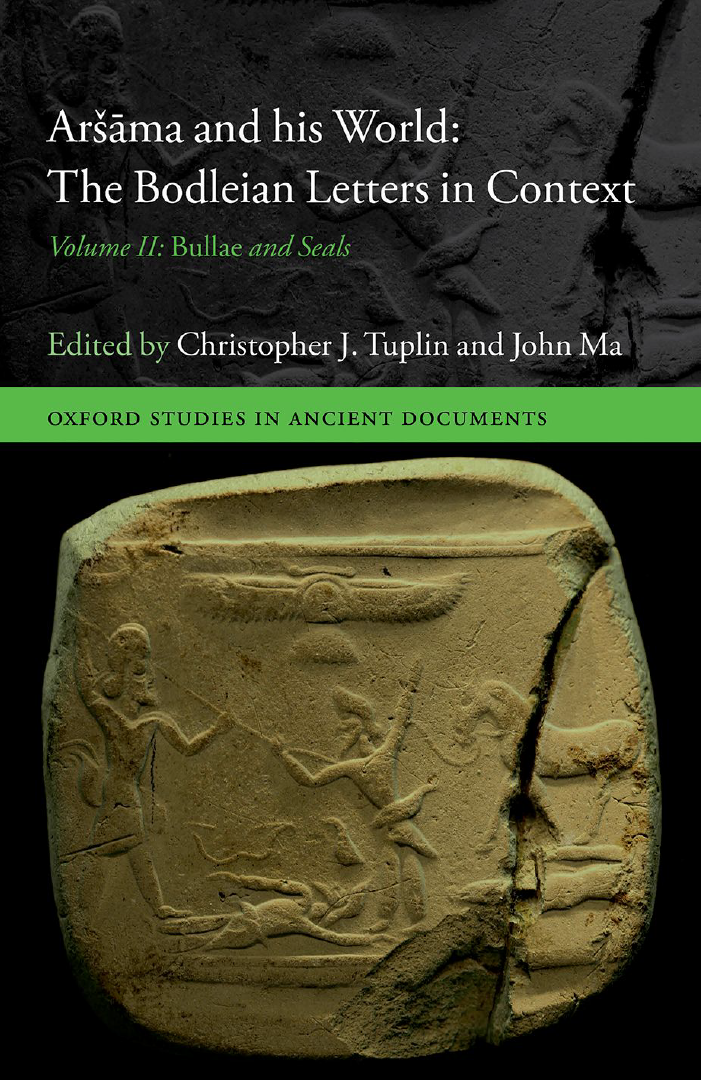 | Henkelman, Wouter F. M.: Nakthor in Persepolis. In: Bullae and seals (Aršāma and his world: The Bodleian letters in context 2), pp. 193-223, Oxford, 2020. (Type: Book Chapter | Links | BibTeX)@inbook{NakthorinPersepolis, |
| 10. |  | Garrison, Mark B.; Henkelman, Wouter F. M.: Sigillophobe suppliers and Idiosyncratic Scribes: Local Information Handling in Achaemenid Pārsa. In: The art of empire in Achaemenid Persia: Studies in honour of Margaret Cool Root, pp. 167–286, Leiden, 2020. (Type: Book Chapter | Abstract | Links | BibTeX)@inbook{nokey,Greek sources, starting with Herodotus, marvelled about the Persian royal roads and the speed of travel and communication they permitted within the vast Achaemenid expanse. Much has been written about this vital network, the spine of empire: about the degree of connectivity it afforded, about the courses of the roads, the people who travelled on it, and the advantages that Alexander and his armies drew from it. The same Greek sources were much less interested in the logistic operation behind the network, with the notable exception of a passage in Pseudo-Aristotle’s Oeconomica, where Antimenes, a high administrator and Alexander appointee, is said to have bidden “the satraps replenish, in accordance with the law of the country, the storehouses/granaries (θησαυροὺς) along the royal roads.” Though offering little detail, this statement opens a view on the efforts necessary to maintain the way stations with sufficient supplies in flour, wine (or beer), fodder and, in the case of halting places for express messengers, fresh horses. |
| 11. |  | Aali, Abolfazl; Stöllner, Thomas; Firuzmandi, Bahman: Analyzing Archaeological Finds from the Chehrabad Salt Mine. In: Journal of Archaeological Studies, vol. 11, no. 2, pp. 191-210, 2019. (Type: Journal Article | Abstract | Links | BibTeX)@article{nokey,The Chehrabad salt mine is one of the rare ancient salt mine in the world and the only identified salt mine in Iran which has evidences of salt extracting over a long time span from 500 BC to modern times. According to the field researches conducted so far, in the excavated area, mining activities are proven to be in use in the Achaemenid, Sasanian, Middle and Late Islamic periods. After the accidental discoveries in 1993 and 2004, several season of excavation and archaeological surveys, have been carried out in the mine and around it. Archaeological researches brought to light interesting results concerning the techniques, periods and extracting tools, also relation between salt mine and the archaeological sites around it. Digging deep tunnels inside the salt rock deposits in different dimensions and sizes and using the various extraction tools can be seen in the excavated area with the difference in details in all the aforementioned periods. The long- term salt extraction activities and multi- periodic collapse of the tunnels, have resulted the formation of various layers such as fall, occupation, mining and erosion layers in different parts of the mine and the filling many of its old tunnels. According to documents, Most of the discovered human remains were probably non- native miners who died during catastrophic mining accidents and mummified naturally. |
| 12. | 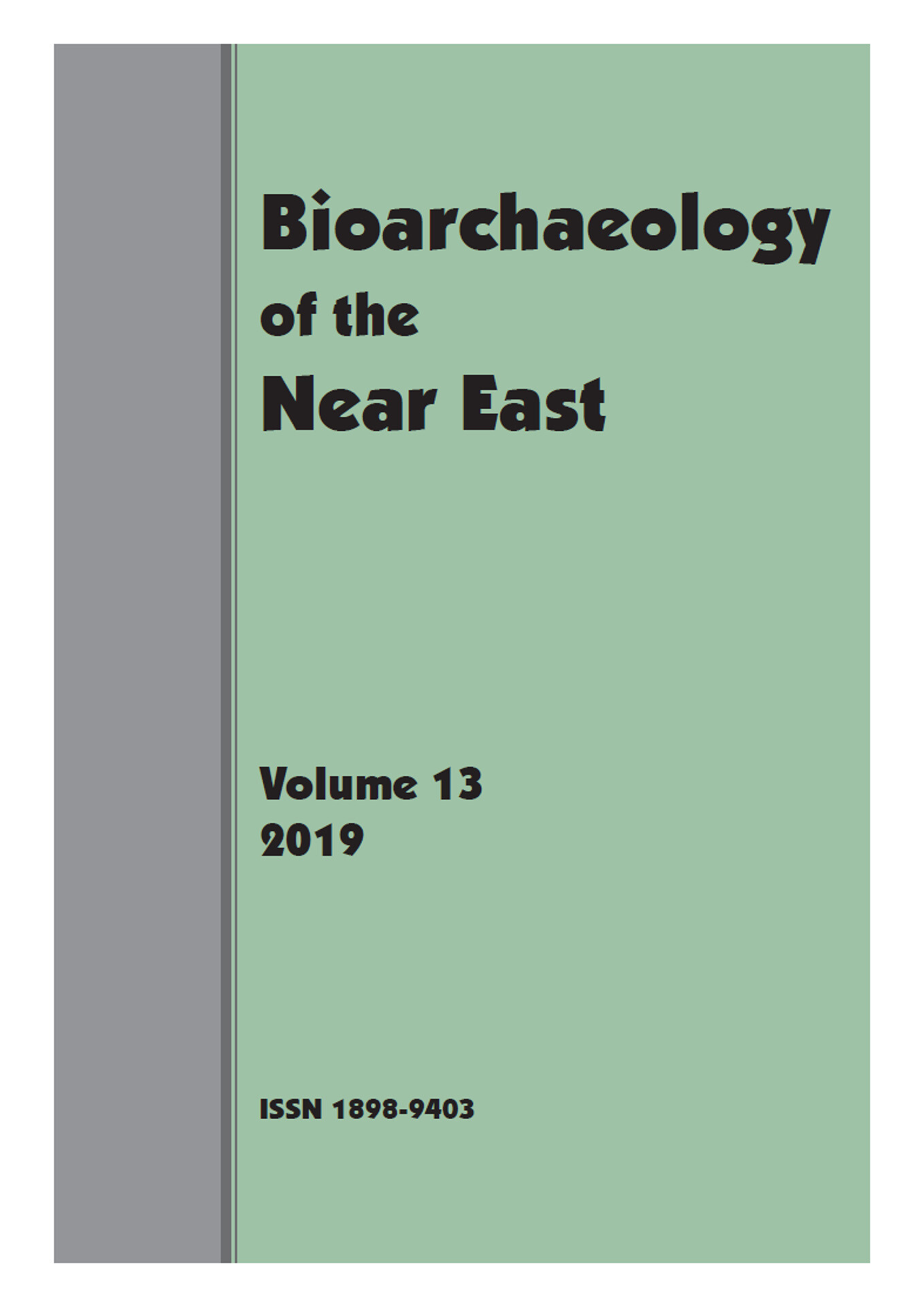 | Nasab, Hamed Vahdati; Aali, Abolfazl; Kazzazi, Mandan; Pollard, Mark; Stöllner, Thomas: Reappraisal of the number of salt mummies identified in Chehrābād Salt Mine, Zanjan, Iran. In: Bioarchaeology of the Near East, vol. 13, pp. 23-47, 2019. (Type: Journal Article | Abstract | Links | BibTeX)@article{nokey,The Chehrābād Salt Mine mummies were first discovered in 1993. So far, six individuals have been identified in the mine. Three (1, 2, and 3) were found accidentally by miners, while another three (4, 5, and 6) were discovered through systematic archaeological excavations. This article shows that there are two more individuals represented in the collection, bringing the total number of mummies to eight. Osteological examination confirms that the extra bones initially placed with Salt Man 1 belong to another individual, possibly a young adult male, of unknown date, called Salt Man 7. In addition, results from AMS dating of an extra piece of mandible, which was originally placed with the skeletal remains of Salt Man 3, indicates that this specimen does not belong to this individual; it was removed from the collection and renamed as Salt Man 8. The osteological analysis of the bone remains of Salt Man 8 suggests that this individual might also be a young male. |
| 13. | 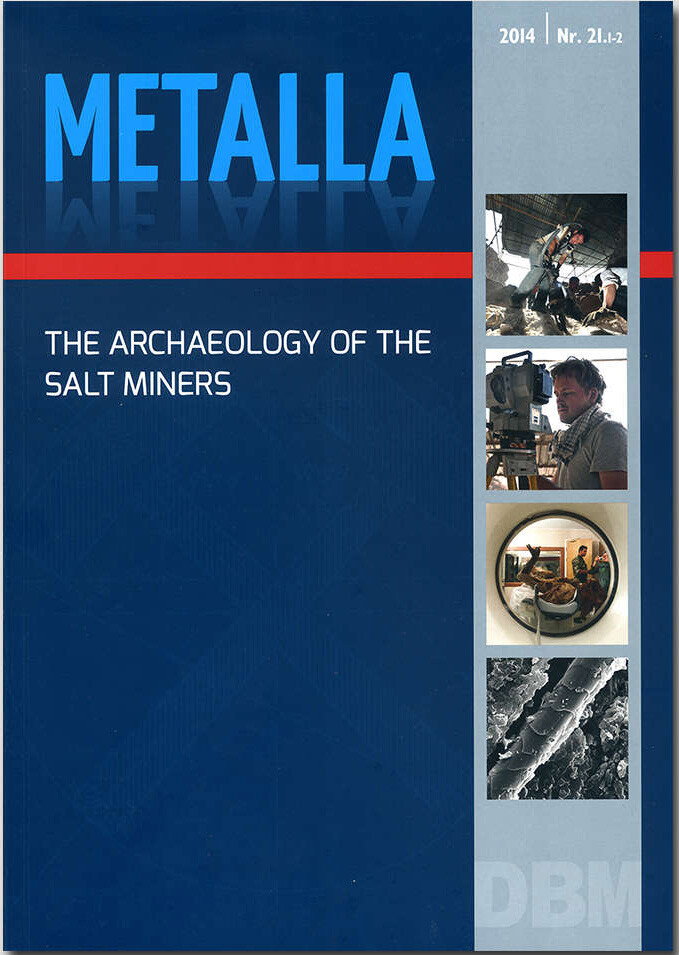 | Aali, Abolfazl; Stöllner, Thomas (Ed.): The Archaeology of the Salt Miners. Interdisciplinary Research 2010-2014.. 2015, ISSN: 0947-6229. (Type: Book | Links | BibTeX)@book{nokey, |
| 14. | Eilers, Wilhelm: Das Volk der Maka vor und nach den Achämeniden. In: Archäologische Mitteilungen aus Iran. , vol. Ergänzungsband 10, 1983. (Type: Journal Article | BibTeX)@article{nokey, | |
| 15. | Fleming, David: Darius I's foundation charters from Susa and the eastern Achaemenid empire. In: Afghan Studies, vol. 3 & 4, pp. 81-87, 1982. (Type: Journal Article | BibTeX)@article{nokey, | |
| 16. | Hansman, John F.: An Achaemenian Stronghold . In: Acta Iranica, vol. 6, pp. 289-309, 1975. (Type: Journal Article | BibTeX)@article{nokey, | |
| 17. | Stronach, David: Achaemenid Village I at Susa and the Persian Migration to Fars. In: Iraq, vol. 36, no. 1/2, pp. 239-248, 1974. (Type: Journal Article | Abstract | Links | BibTeX)@article{nokey,"Among his other interests Sir Max Mallowan has always held a lively affection for the history and archaeology of south-western Iran, and in this year in which we celebrate his 70th birthday it may be appropriate to offer him these notes on certain problems connected with the final stages of the Persian migration. It is perhaps apt also that I should take u p an Achaemenian topic since it was Sir Max, now thirteen years ago, who first encouraged me to excavate at Pasargadae, the capital of Cyrus the Great. The route by which the Persian tribes reached the region of Fars remains in dispute. According to one time-honoured theory the Persians entered Iran by way of the land bridge of the Caucasus and made their first halt c. 850 B.C. in a northerly locality, Parsua, to the west or south-west of Lake Urmia. From there at some date after Sargon of Assyria's eighth campaign in the year 714 B.C., it has been suggested that they may have struck due south, arriving first in Khuzistan, where they settled at Susa, Masjid-i Sulaiman and Bard-i Nishandeh, before they proceeded eastwards to the locality of Pasargadae." |
2024 |
|
 | Stöllner, Thomas; Aali, Abolfazl; Boenke, Nicole; Davoudi, Hossein; Draganits, Erich; Fathi, Homa; Franke, Kristina A.; Herd, Rainer; Kosczinski, Katja; Mashkour, Marjan; Mostafapour, Iman; Nezafati, Nima; Öhrström, Lena Maria; Rühli, Frank; Saeidi, Sahand; Schapals, Fabian; Schimerl, Nicolas; Sikorski, Beate; Zifar, Hamed: Salt Mining and Salt Miners at Talkherud–Douzlākh, Northwestern Iran: From Landscape to Resource‑Scape. In: Journal of World Prehistory, vol. 37, pp. 61-140, 2024. (Type: Journal Article | Abstract | Links | BibTeX | Tags: Achaemenid, Mining, Resources, Salt, Sasanian)@article{nokey,The Douzlākh salt deposit (region: Māhneshān, Zanjān Province, Iran) is unique for its pure and crystal rock salt and was an important supplier of culinary (‘table’) salt in Achaemenid, Sassanid and Middle Islamic times. At the same time, the site was of central importance to the economic life of the rural populations in the Talkherud Basin. This article focuses on the question of which strategies were decisive for the exploitation of the salt mountain and how a potential supra-regional interest in the culinary salt was perhaps reciprocally connected with a rural hinterland. This hinterland was recently investigated in greater detail by our ongoing research. Did aresource-scape based on salt develop with specific economic and social strategies and practices around the Douzlākh? And was this development triggered by state or imperial control and demand? These questions are being pursued from a perspective utilising a variety of subjects and methods in archaeology, archaeobiology, archaeometry and geoarchaeology. In addition to a detailed on-site artefact study, several on- and off-site datasets have been collected and analysed within a multidisciplinary framework. This article synthesises the results of a major 12-year project to identify the organisational principles and daily practices within this specific salt-scape. The sensational finds of the Douzlākh salt mummies, along with the generally outstanding preservation of organic ecofacts and artefacts, allow insights into antique life-worlds that are otherwise hard to come by. The multidisciplinary study of on- and off-site data allows far-reaching insights into interdisciplinary topics, such as the social system, supply and logistics, or the presence of non-local or non-indigenous populations. |
2022 |
|
 | Moskvin, Aleksei; Grömer, Karina; Moskvina, Mariia; Kuzmichev, Victor; Stöllner, Thomas; Aali, Abolfazl: 3D Visualization of the 2400-Year-Old Garments of Salt Man 4 from Chehrābād, Iran.. In: Ulanowska, Agata; Grömer, Karina; Berghe, Ina Vanden; Öhrman, Magdalena (Ed.): Ancient Textile Production from an Interdisciplinary Perspective, Springer, Cham, 2022, ISBN: 978-3-030-92170-5. (Type: Book Chapter | Links | BibTeX | Tags: Achaemenid, Mining, Organic remains, Zanjan)@inbook{nokey, |
2021 |
|
 | Henkelman, Wouter F. M.; Stolper, Matthew W.: Counting Trees around Persepolis. In: Agut-Labordère, Damien; Boucharlat, Rémy; Joannès, Francis; Kuhrt, Amélie; Stolper, Matthew W. (Ed.): Achemenet, vingt ans après: Études offertes à Pierre Briant à l’occasion des vingt ans du Programme Achemenet , pp. 169-199, Peeters, Leuven, 2021. (Type: Book Chapter | Links | BibTeX | Tags: Achaemenid, Fars)@inbook{nokey, |
 | Stöllner, Thomas; Aali, Abolfazl: Einblicke in eine Katastrophe. Das Salzbergwerk von Douzlākh bei Chehrābād. In: Karlsruhe, Badisches Landesmuseum (Ed.): vol. Die Perser. Am Hof der Großkönige, pp. 116-20, WBG/Philipp von Zabern, Darmstadt, 2021, ISBN: ISBN 978-3-8053-5276-5. (Type: Book Chapter | Links | BibTeX | Tags: Achaemenid, Administration, Institutions, Mining, Salt, Sasanian, Zanjan)@inbook{nokey, |
 | Henkelman, Wouter F. M.: Local Administration: Persia. In: A companion to the Achaemenid Persian Empire, vol. 2, pp. 881—904, John Wiley & Sons, 2021. (Type: Book Chapter | Abstract | Links | BibTeX | Tags: Achaemenid, Administration, Clay tablets, Elam, Institutions, Textual sources)@inbook{nokey,Two predominantly Elamite archives found at Persepolis are the prime source for the local administration of the Achaemenid heartland per se as well as for the backbone for any socioeconomic history of the empire at large. The sur- vey offered here centers on administrative structures, hierarchies, and proto-cols in relation with other textual sources; it is supplemented by another survey (Henkelman 2013b), focusing on find circumstances, formal charac-teristics, and connections with archeological discoveries (other surveys: Cahill 1985; Briant 2002: pp. 422–471; Henkelman 2008b: pp. 65–179, 2013a; Azzoni et al. 2017; Garrison 2017: pp. 15–116; cf. Kuhrt 2007: pp. 763–825). |
 | Stöllner, Thomas; Aali, Abolfazl: Long-Term Salt Mining in Chehrābād: Resilient Strategies in Accessing Mineral Resources at the Iranian Highlands. In: Pearls, Politics and Pistachios: Essays in Anthropology and Memories on the Occasion of Susan Pollock’s 65th Birthday, pp. 352-369, Ex Oriente/Propylaeum, Berlin/Heidelberg, 2021. (Type: Book Chapter | Links | BibTeX | Tags: Achaemenid, Administration, Bronze Age, Chalcolithic, Institutions, Iron Age, Islamic era, Minerals, Mining, Neolithic, Resilience, Resources, Salt, Sasanian, Zanjan)@inbook{nokey, |
 | Henkelman, Wouter F. M.; Jacobs, Bruno: Roads and Communication. In: A companion to the Achaemenid Persian Empire 1, vol. 1, pp. 219-735, John Wiley & Sons, Hoboken, 2021. (Type: Book Chapter | Abstract | Links | BibTeX | Tags: Achaemenid, Administration, Institutions, Structure development)@inbook{nokey,A refined and extensive net of roads ran through the Achaemenid Empire, known as “royal roads” in the classical sources. They served messengers and embassies as well as being used for the transport of taxes and tributes. Because of their considerable width, they were suited for the movement of troops and transport by larger vehicles. Roads such as the well-documented connections between Sardis and Susa or between Persepolis and Susa crossed and opened up the entire empire. There were also countless auxiliary roads. Furthermore, travel and transport by water played an important role. The transport network guaranteed a speedy flow of information and empire-wide communication, and thus provisioning for travelers was secured, way stations were maintained, and a high standard of safety was guaranteed. |
2020 |
|
 | Stöllner, Thomas; Aali, Abolfazl; Kashani, Natascha Bagherpour (Ed.): Tod im Salz. Eine archäologische Ermittlung in Persien. Nünnerich-Asmus Verlag & Media GmbH, 2020, ISBN: 978-3-96176-141-8. (Type: Book | Abstract | Links | BibTeX | Tags: Achaemenid, Administration, Bronze Age, Chalcolithic, Institutions, Iron Age, Islamic era, Minerals, Mining, Mobility, Neolithic, Salt, Sasanian, Zanjan)@book{nokey,Since the first discoveries in 1993 bodies or body-parts of eight humans have been discovered at the salt-mine of Douzlākh at Chehrābād. These bodies allow a reconstruction of their lives as workers during the different operation periods. By involving many different scientific fields, it became possible to investigate their palaeo-medical aspects, their diet and their health status as well the causes of their death and their involvement into different aspects of the mining operation and logistics of the mine. It is possible not only to reconstruct three different catastrophes during the Achaemenid, the early and the late Sasanian times but also to understand the social aspects of the working people. The Achaemenid miners certainly came from abroad but already stayed a while in the region, apart from the young miner no. 4 who seems to have arrived shortly before the catastrophe. This group of migrants possibly were sent within a “bandaka”, an Achaemenid labour duty. The Sassanian miners partly came from a “regional” background but also came shortly before their deaths. Saltman 1 is interesting as he is an older individual who possibly had a special role within the miners. Mining at Douzlakh was predominantly operated in periods of strong centralized political systems when governmental activities could be organized over longer distances. |
 | Henkelman, Wouter F. M.: Nakthor in Persepolis. In: Bullae and seals (Aršāma and his world: The Bodleian letters in context 2), pp. 193-223, Oxford, 2020. (Type: Book Chapter | Links | BibTeX | Tags: Achaemenid, Fars, Seals)@inbook{NakthorinPersepolis, |
 | Garrison, Mark B.; Henkelman, Wouter F. M.: Sigillophobe suppliers and Idiosyncratic Scribes: Local Information Handling in Achaemenid Pārsa. In: The art of empire in Achaemenid Persia: Studies in honour of Margaret Cool Root, pp. 167–286, Leiden, 2020. (Type: Book Chapter | Abstract | Links | BibTeX | Tags: Achaemenid, Administration, Institutions, Mobility, Structure development, Textual sources)@inbook{nokey,Greek sources, starting with Herodotus, marvelled about the Persian royal roads and the speed of travel and communication they permitted within the vast Achaemenid expanse. Much has been written about this vital network, the spine of empire: about the degree of connectivity it afforded, about the courses of the roads, the people who travelled on it, and the advantages that Alexander and his armies drew from it. The same Greek sources were much less interested in the logistic operation behind the network, with the notable exception of a passage in Pseudo-Aristotle’s Oeconomica, where Antimenes, a high administrator and Alexander appointee, is said to have bidden “the satraps replenish, in accordance with the law of the country, the storehouses/granaries (θησαυροὺς) along the royal roads.” Though offering little detail, this statement opens a view on the efforts necessary to maintain the way stations with sufficient supplies in flour, wine (or beer), fodder and, in the case of halting places for express messengers, fresh horses. |
2019 |
|
 | Aali, Abolfazl; Stöllner, Thomas; Firuzmandi, Bahman: Analyzing Archaeological Finds from the Chehrabad Salt Mine. In: Journal of Archaeological Studies, vol. 11, no. 2, pp. 191-210, 2019. (Type: Journal Article | Abstract | Links | BibTeX | Tags: Achaemenid, Mining, Resilience, Resources, Sasanian, Zanjan)@article{nokey,The Chehrabad salt mine is one of the rare ancient salt mine in the world and the only identified salt mine in Iran which has evidences of salt extracting over a long time span from 500 BC to modern times. According to the field researches conducted so far, in the excavated area, mining activities are proven to be in use in the Achaemenid, Sasanian, Middle and Late Islamic periods. After the accidental discoveries in 1993 and 2004, several season of excavation and archaeological surveys, have been carried out in the mine and around it. Archaeological researches brought to light interesting results concerning the techniques, periods and extracting tools, also relation between salt mine and the archaeological sites around it. Digging deep tunnels inside the salt rock deposits in different dimensions and sizes and using the various extraction tools can be seen in the excavated area with the difference in details in all the aforementioned periods. The long- term salt extraction activities and multi- periodic collapse of the tunnels, have resulted the formation of various layers such as fall, occupation, mining and erosion layers in different parts of the mine and the filling many of its old tunnels. According to documents, Most of the discovered human remains were probably non- native miners who died during catastrophic mining accidents and mummified naturally. |
 | Nasab, Hamed Vahdati; Aali, Abolfazl; Kazzazi, Mandan; Pollard, Mark; Stöllner, Thomas: Reappraisal of the number of salt mummies identified in Chehrābād Salt Mine, Zanjan, Iran. In: Bioarchaeology of the Near East, vol. 13, pp. 23-47, 2019. (Type: Journal Article | Abstract | Links | BibTeX | Tags: Achaemenid, Mining, Resilience, Resources, Sasanian, Zanjan)@article{nokey,The Chehrābād Salt Mine mummies were first discovered in 1993. So far, six individuals have been identified in the mine. Three (1, 2, and 3) were found accidentally by miners, while another three (4, 5, and 6) were discovered through systematic archaeological excavations. This article shows that there are two more individuals represented in the collection, bringing the total number of mummies to eight. Osteological examination confirms that the extra bones initially placed with Salt Man 1 belong to another individual, possibly a young adult male, of unknown date, called Salt Man 7. In addition, results from AMS dating of an extra piece of mandible, which was originally placed with the skeletal remains of Salt Man 3, indicates that this specimen does not belong to this individual; it was removed from the collection and renamed as Salt Man 8. The osteological analysis of the bone remains of Salt Man 8 suggests that this individual might also be a young male. |
2015 |
|
 | Aali, Abolfazl; Stöllner, Thomas (Ed.): The Archaeology of the Salt Miners. Interdisciplinary Research 2010-2014.. 2015, ISSN: 0947-6229. (Type: Book | Links | BibTeX | Tags: Achaemenid, Mining, Resilience, Resources, Sasanian, Zanjan)@book{nokey, |
1983 |
|
Eilers, Wilhelm: Das Volk der Maka vor und nach den Achämeniden. In: Archäologische Mitteilungen aus Iran. , vol. Ergänzungsband 10, 1983. (Type: Journal Article | BibTeX | Tags: Achaemenid)@article{nokey, | |
1982 |
|
Fleming, David: Darius I's foundation charters from Susa and the eastern Achaemenid empire. In: Afghan Studies, vol. 3 & 4, pp. 81-87, 1982. (Type: Journal Article | BibTeX | Tags: Achaemenid)@article{nokey, | |
1975 |
|
Hansman, John F.: An Achaemenian Stronghold . In: Acta Iranica, vol. 6, pp. 289-309, 1975. (Type: Journal Article | BibTeX | Tags: Achaemenid)@article{nokey, | |
1974 |
|
Stronach, David: Achaemenid Village I at Susa and the Persian Migration to Fars. In: Iraq, vol. 36, no. 1/2, pp. 239-248, 1974. (Type: Journal Article | Abstract | Links | BibTeX | Tags: Achaemenid)@article{nokey,"Among his other interests Sir Max Mallowan has always held a lively affection for the history and archaeology of south-western Iran, and in this year in which we celebrate his 70th birthday it may be appropriate to offer him these notes on certain problems connected with the final stages of the Persian migration. It is perhaps apt also that I should take u p an Achaemenian topic since it was Sir Max, now thirteen years ago, who first encouraged me to excavate at Pasargadae, the capital of Cyrus the Great. The route by which the Persian tribes reached the region of Fars remains in dispute. According to one time-honoured theory the Persians entered Iran by way of the land bridge of the Caucasus and made their first halt c. 850 B.C. in a northerly locality, Parsua, to the west or south-west of Lake Urmia. From there at some date after Sargon of Assyria's eighth campaign in the year 714 B.C., it has been suggested that they may have struck due south, arriving first in Khuzistan, where they settled at Susa, Masjid-i Sulaiman and Bard-i Nishandeh, before they proceeded eastwards to the locality of Pasargadae." | |
